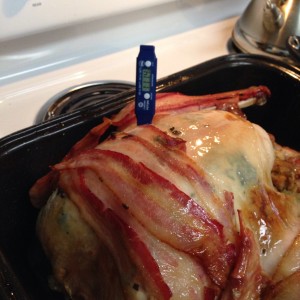One of my former roommates was a straight edge punk-loving vegan for a while. Now he eats meat and drinks beer, but for a while he survived on rice and sriracha. Sometimes he left his steamed rice out overnight – making some egg-free fried rice the next day. This was before either of us knew much about Bacillus cereus and rice.
Earlier this week Claire Lower from Lifehacker emailed a couple of questions about leftover rice safety. The Lifehacker folks often ask really good questions about the science and why behind food safety recommendations – Claire included. Claire wanted to know why some guidelines say not to leave rice out on the stove over night.
I sent Claire a couple of papers including this one which is an oldie (1974), but a goodie from Gilbert and colleagues which included this awesome B. cereus spore/vegetative cell growth figure (right, exactly as shown) highlighting anincrease of a log or more within 4 hours once in vegetative state.
We looped Don into our discussion and he pointed out the somewhat common practice of boiled and then fried rice in some Asian cooking techniques.
According to Benjamin Chapman, Food Safety Specialist from North Carolina State University, cooking rice doesn’t necessarily kill all the pathogens that may be lurking about. “The issue with rice,” he explained to me over email, “is that one pathogen, Bacillus cereus, is quite prevalent in dried rice (some sources say ubiquitous), likely as spores. The spores may survive cooking. If cooked rice is subsequently held at room temperature, the spores can come out of their protective form, germinate, and vegetative forms multiply. The cooked rice environment provides a lot of water and nutrients for growth. As a by-product of growth, they create a couple of toxins, including a heat-stable one.”
Beyond refrigerating any home-cooked rice, a sense of vigilance is helpful when dining out. According to food scientist Donald Schaffner of Rutgers University, some restaurants “cook up a large batch of rice, hold it at room temperature all day,” and then take portions from the batch as needed. “Because Bacillus makes a heat stable toxin,” he explained “this is not a best practice, and has led to outbreaks in the past.” “Heat stable” means that the toxin can survive boiling and, once the rice is cooled into the “danger zone” of 59-122°F, the bacteria can multiply, making even more of the toxin. Sushi rice, he noted, shouldn’t be a problem as vinegar is added to lower the pH, allowing it to be held safely at room temperature.

